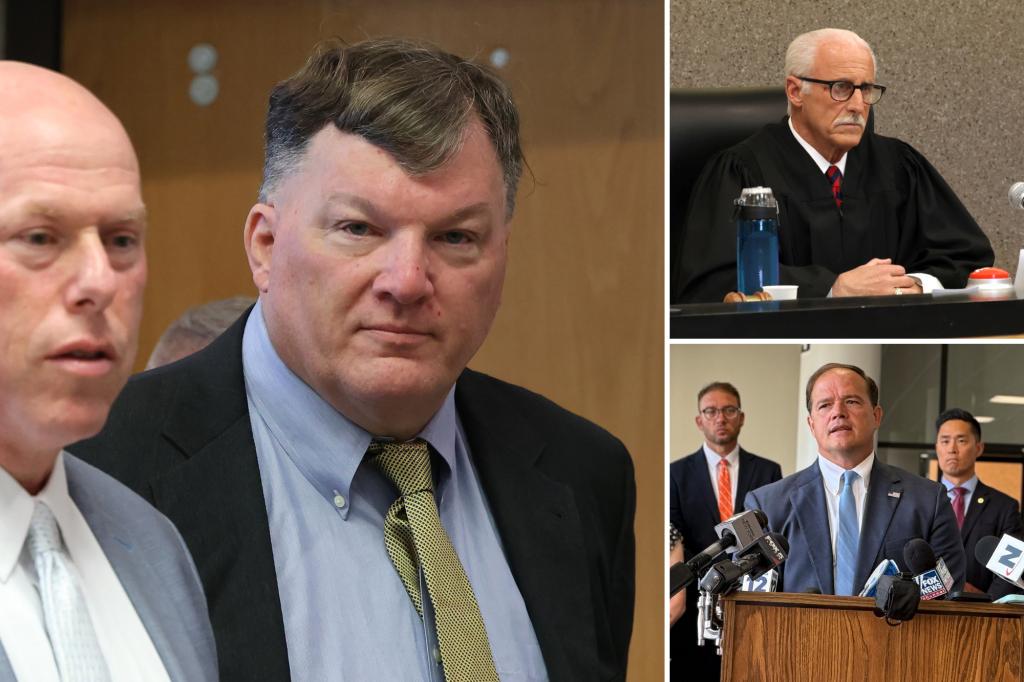Judge Rules DNA Evidence Admissible in Gilgo Beach Serial Killer Case
In a significant ruling Tuesday, Suffolk County prosecutors secured a major win in their case against Rex Heuermann, the accused Gilgo Beach serial killer. Judge Tim Mazzei delivered what many consider a bombshell decision, allowing prosecutors to use sophisticated DNA evidence against the 61-year-old architect and consolidating the charges into a single trial for all seven murders. Suffolk County District Attorney Ray Tierney expressed confidence following the ruling, telling reporters, “If I wasn’t confident in this case, I would’ve never brought it to trial.” This decisive victory for the prosecution preserves crucial evidence that forms the backbone of their case against Heuermann, who has been held without bail since his arrest in July 2023 for the killings that occurred between 1993 and 2010.
The ruling represents a significant setback for Heuermann’s defense strategy. His attorney, Michael Brown, had vigorously challenged the admissibility of the DNA evidence, which he characterized as “magic,” and sought separate trials for each murder charge. The defense argued that Astrea Labs, which processed the DNA evidence using cutting-edge techniques capable of analyzing damaged samples, lacked proper licensing in New York State and that admitting such evidence would violate state health laws. Despite these objections, Judge Mazzei determined earlier this month that the DNA evidence could be presented at trial, marking the first time this advanced DNA technology will be used in a New York state courtroom. The ruling allows prosecutors to present evidence connecting Heuermann to all seven victims: Valerie Mack, Melissa Taylor, Megan Waterman, Melissa Barthelemy, Maureen Brainard-Barnes, Sandra Costilla, and Amber Lynn Costello.
The case has drawn significant attention not only for its horrific nature but also because it remained unsolved for many years. The breakthrough came when former NYPD executive Rodney Harrison assumed the role of Suffolk County police commissioner and made reopening the Gilgo Beach murders a priority. The investigation gained momentum, ultimately leading to Heuermann’s arrest. The victims, all young women working as sex workers, were discovered along a remote stretch of Long Island coastline, their remains telling a tragic story of serial predation that went unresolved for over a decade. Heuermann, described as a “hulking architect,” has consistently denied involvement in the killings, but prosecutors believe the DNA evidence creates an irrefutable link between him and the victims.
The consolidation of the charges into a single trial represents another significant victory for the prosecution. By trying all seven murder cases together, prosecutors can present a comprehensive narrative of the alleged killing spree, potentially strengthening their case by highlighting patterns and similarities across the murders. This approach allows them to build a more compelling picture of Heuermann as a serial predator rather than addressing each killing as an isolated incident. The defense had argued that separate trials would be more appropriate, likely hoping to limit the cumulative impact of evidence and testimony across multiple cases. Judge Mazzei’s decision to proceed with a single trial suggests he found the prosecution’s argument for consolidation—based on common evidence, methodology, and the interconnected nature of the crimes—more persuasive.
The upcoming trial promises to be extensive and complex. District Attorney Tierney has indicated that the prosecution plans to call “well over” 100 witnesses from 15 different states to testify. Additionally, more than 6.5 million documents will be entered into evidence, highlighting the massive scale of the investigation that spanned decades. The sheer volume of evidence and witnesses underscores the meticulous work that went into building the case against Heuermann after years of dead ends and false starts. The prosecution will likely present a detailed timeline connecting Heuermann to each victim, supported by the DNA evidence that Judge Mazzei has now deemed admissible. For the families of the victims, who have waited years for justice, the trial represents a chance for closure and answers about what happened to their loved ones.
As the case moves forward toward trial, the spotlight remains on the advanced DNA technology that helped break the case. The decision to allow this evidence marks a potentially precedent-setting moment in New York’s legal landscape, opening the door for similar techniques to be used in other cold cases where traditional DNA analysis proved insufficient. For investigators working on unsolved murders across the country, the Gilgo Beach case demonstrates how technological advances can breathe new life into stalled investigations. Meanwhile, Heuermann continues to maintain his innocence from behind bars, where he has remained since his arrest. The date for the trial has not yet been set, but when proceedings begin, they will likely capture national attention as one of the most significant serial murder trials in recent years. For the communities of Long Island that lived in fear during the years when the killer remained at large, the trial represents the culmination of a long journey toward justice and healing.


